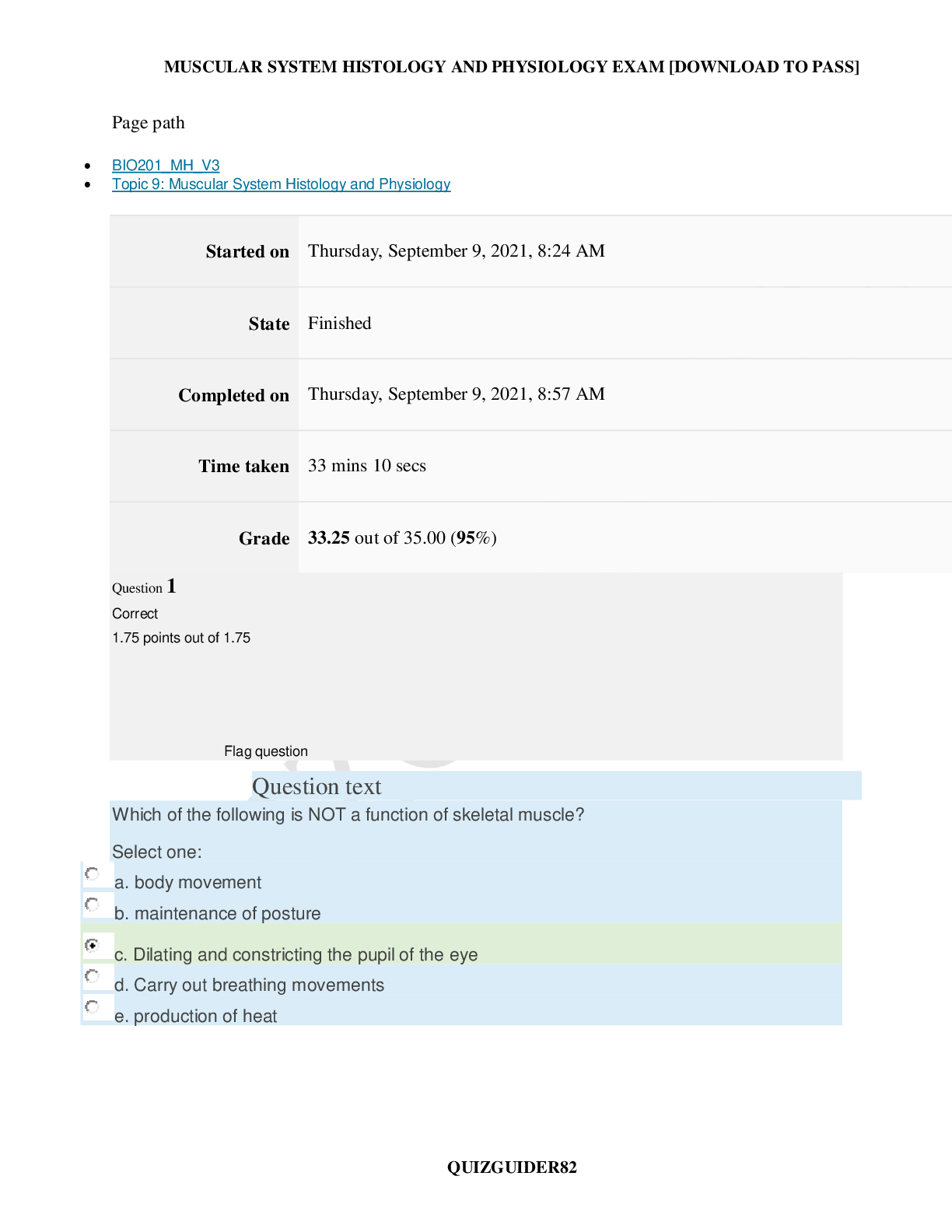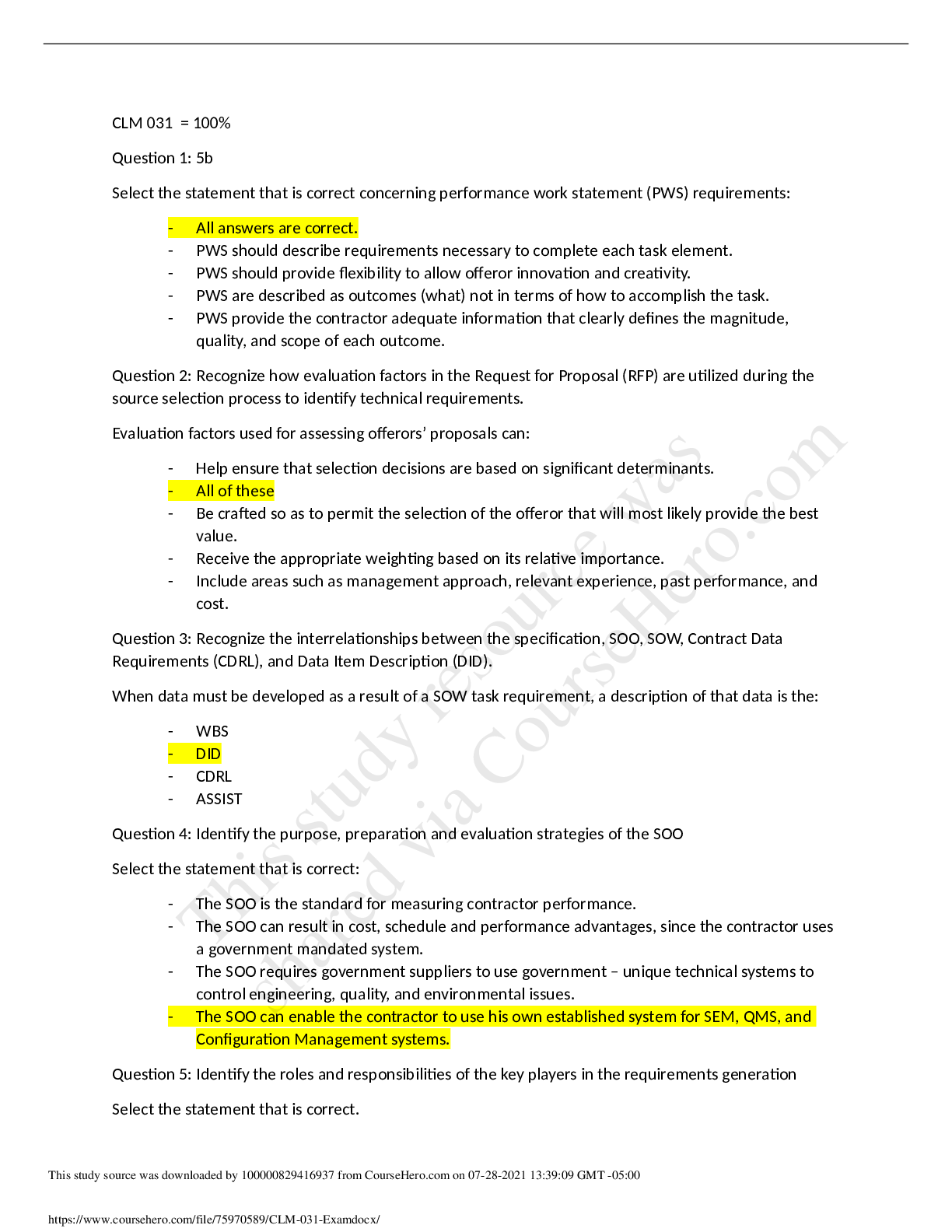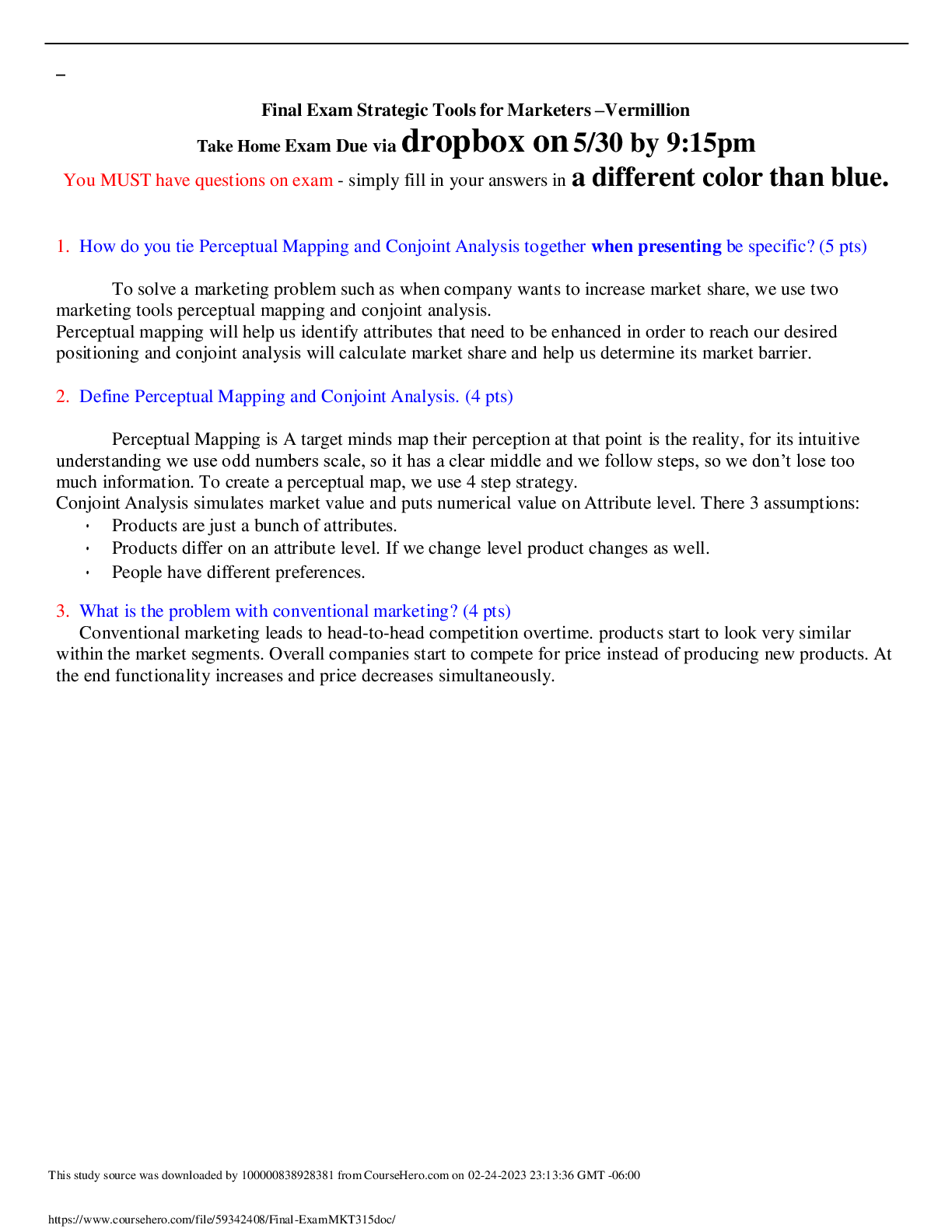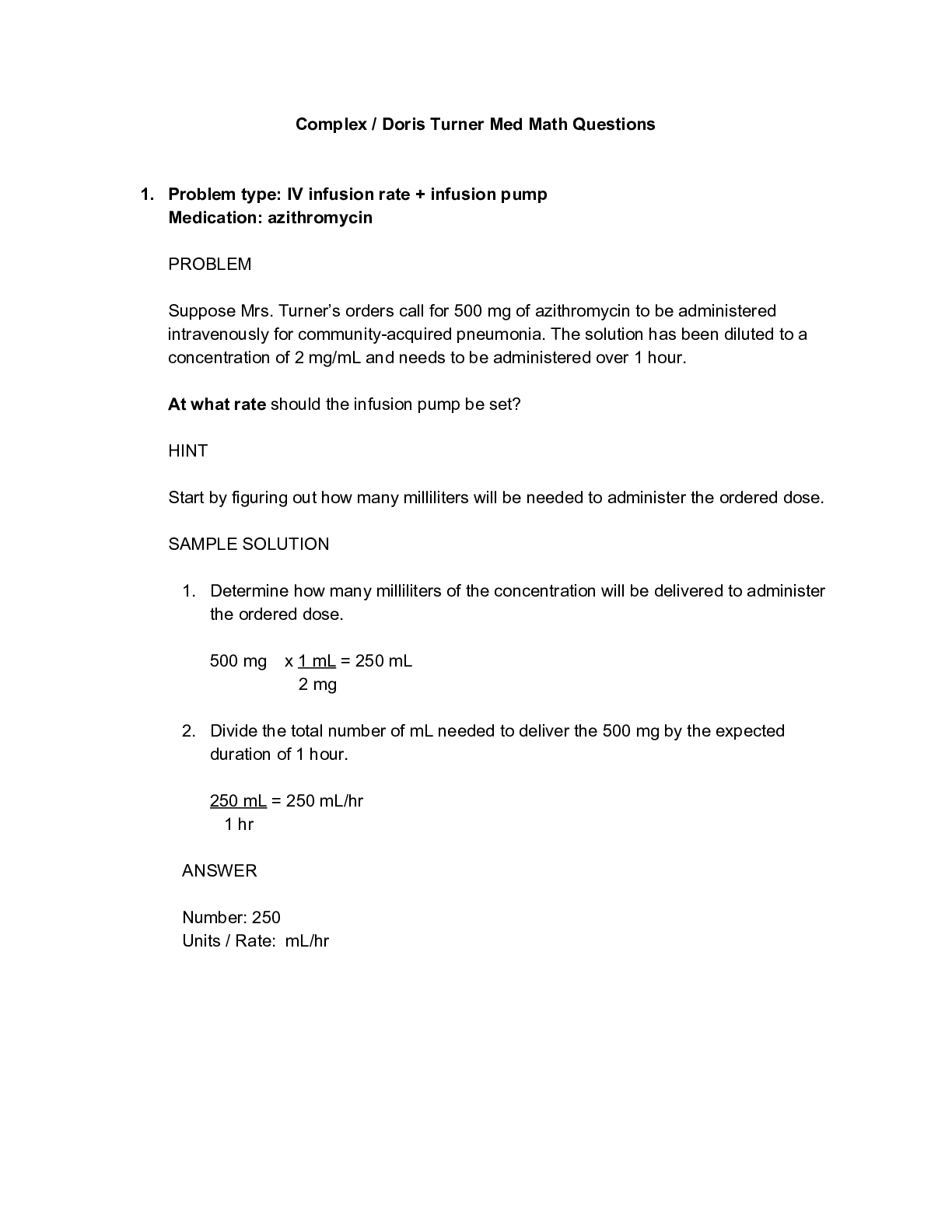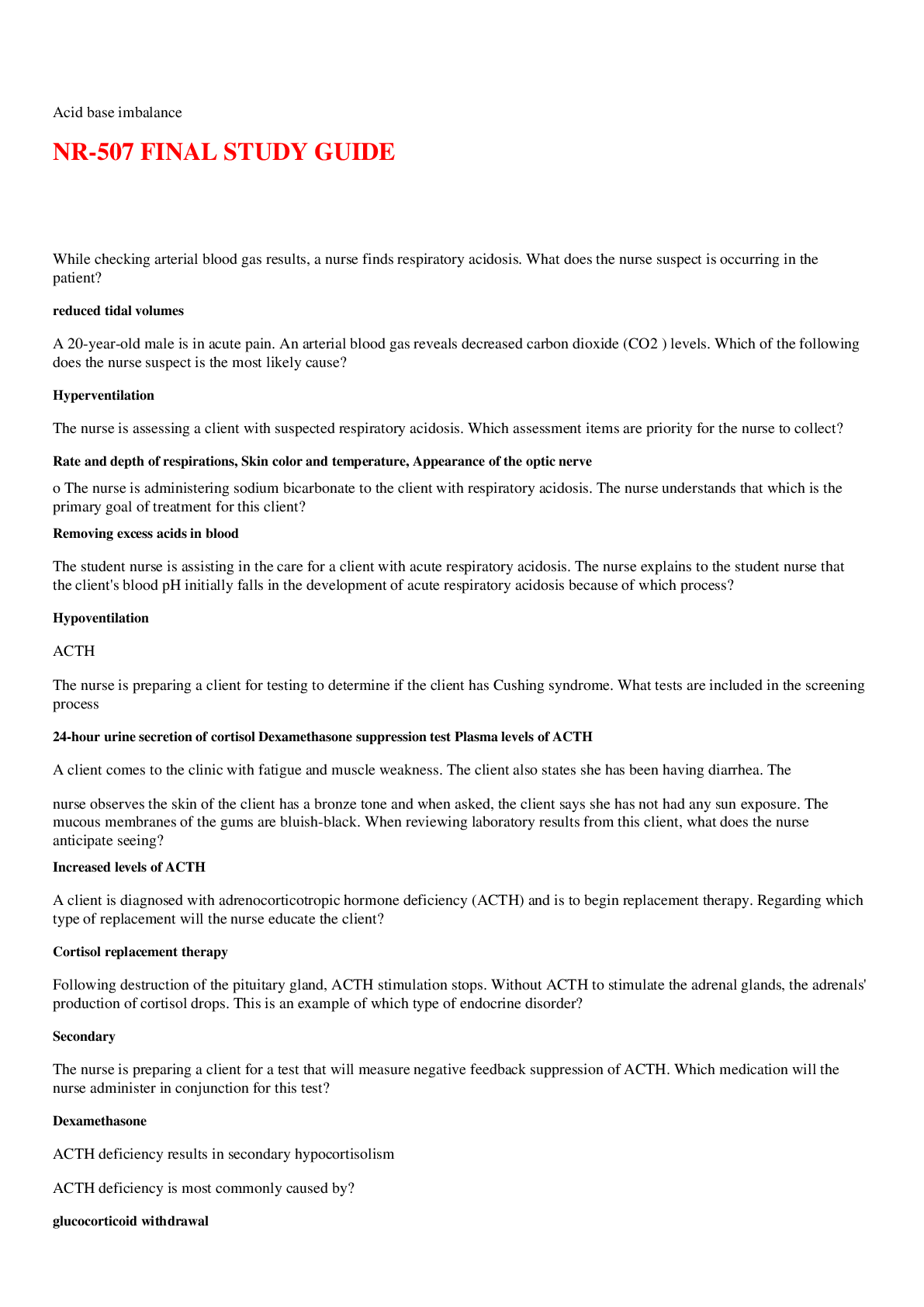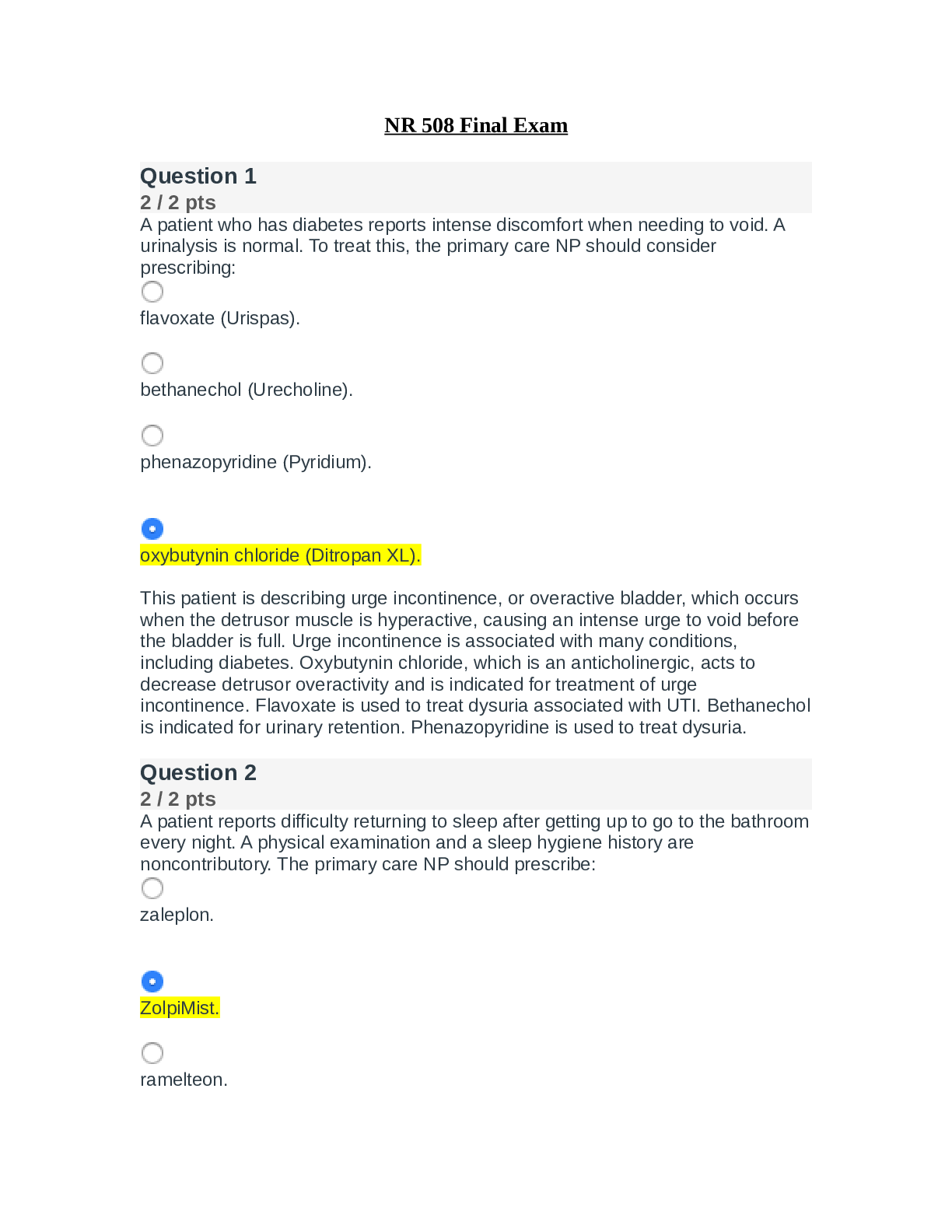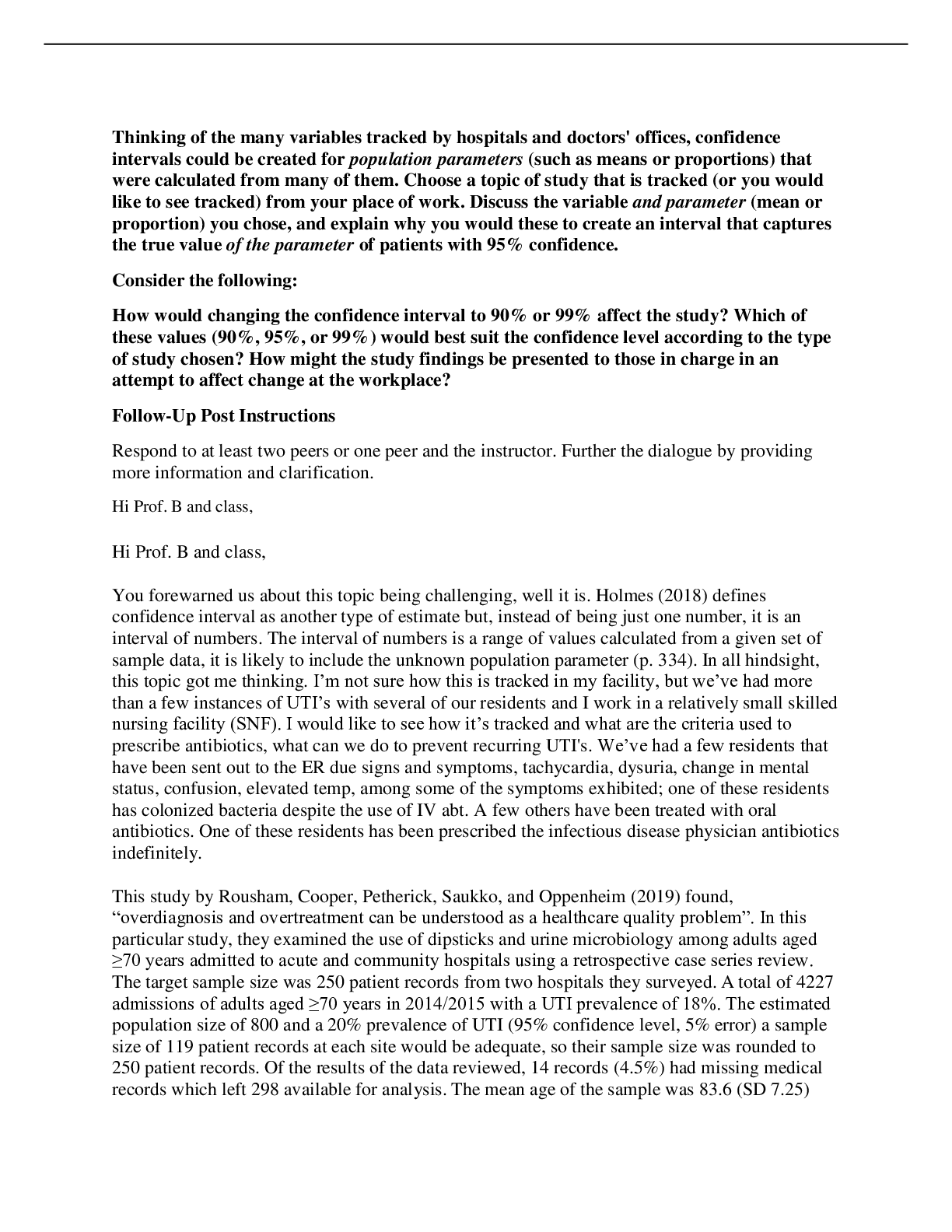Anatomy and Physiology - A&P 1 > QUESTIONS & ANSWERS > BIO201_MH_V3: Cell Biology (QUESTIONS WITH CORRECT ANSWERS) (All)
BIO201_MH_V3: Cell Biology (QUESTIONS WITH CORRECT ANSWERS)
Document Content and Description Below
Page path BIO201_MH_V3 Topic 3: Cell Biology Started on Tuesday, September 7, 2021, 5:20 AM State Finished Completed on Tuesday, September 7, 2021, 5:44 AM Time taken 23 mins 57 secs Gr... ade 35.00 out of 35.00 (100%) Question 1 Correct 1.75 points out of 1.75 Flag question Question text The lower limit of resolution of a light microscope is Select one: a. 100μm b. 0.1μm c. 10μm d. 0.01μm e. 1.0μm Question 2 Correct 1.75 points out of 1.75 Flag question Question text What structure does "C" represent on the diagram of the plasma membrane? Select one: a. membrane channel protein b. phospholipid bilayer c. internal membrane surface d. peripheral protein e. integral protein Question 3 Correct 1.75 points out of 1.75 Flag question Question text What structure does "B" represent on the diagram of the plasma membrane? Select one: a. membrane channel protein b. phospholipid bilayer c. internal membrane surface d. peripheral protein e. integral protein Question 4 Correct 1.75 points out of 1.75 Flag question Question text What structure does "E" represent on the diagram of the plasma membrane? Select one: a. membrane channel protein b. phospholipid bilayer c. internal membrane surface d. peripheral protein e. receptor protein Question 5 Correct 1.75 points out of 1.75 Flag question Question text What structure does "A" represent on the diagram of the plasma membrane? Select one: a. membrane channel protein b. phospholipid bilayer c. internal membrane surface d. peripheral protein e. integral protein Question 6 Correct 1.75 points out of 1.75 Flag question Question text Which of the following is NOT true of a transmission electron microscope (TEM)? Select one: a. The limit of resolution is about 0.1nm. b. Electrons are passed through the specimen. c. Gives the clearest three-dimensional images. d. The specimen must be fixed in plastic. e. The electron beam is focused with electromagnets. Question 7 Correct 1.75 points out of 1.75 Flag question Question text Which of the following is NOT a characteristic function of a cell? Select one: a. reproduction and inheritance b. metabolism and energy use c. movement d. synthesis e. communication Question 8 Correct 1.75 points out of 1.75 Flag question Question text The cell is the basic unit of life. All cellular structures exhibit special functions. Match the structure with its function. What is the function of "B"? Select one: a. directs cellular activities, contains DNA b. contains digestive enzymes c. outer boundary of cell, controls entry and exit of substances d. major site of ATP synthesis when oxygen is available e. site of protein synthesis Question 9 Correct 1.75 points out of 1.75 Flag question Question text Which of the following would increase the maximum rate of facilitated diffusion? Select one: a. increase the concentration gradient of the transported molecule to the saturation point b. decrease the concentration gradient of the transported molecule c. increase the concentration of the competitive molecules d. increased ATP synthesis e. None of these choices is correct. Question 10 Correct 1.75 points out of 1.75 Flag question Question text In ______________, carrier molecules move a substance against (up) the concentration gradient. Select one: a. simple diffusion b. exocytosis c. facilitated diffusion d. active transport e. endocytosis Question 11 Correct 1.75 points out of 1.75 Flag question Question text In general, water-soluble molecules diffuse through the ______ ______; and lipid-soluble molecules diffuse through the ______ ______. Select one: a. membrane channels; membrane channels b. membrane channels; lipid bilayer c. lipid bilayer; membrane channels d. lipid bilayer; lipid bilayer e. None of these choices is correct. Question 12 Correct 1.75 points out of 1.75 Flag question Question text Cells of the small intestine and kidney tubules have extensions that increase their surface area called Select one: a. cilia. b. hairs. c. ruguae. d. microvilli. e. flagella. Question 13 Correct 1.75 points out of 1.75 Flag question Question text Red blood cells (RBCs) have been placed in three different solutions: hypotonic, hypertonic, isotonic. What is solution "C" relative to the RBC? Select one: a. hypotonic solution b. hypertonic solution c. isotonic solution d. hemolyzed e. crenated Question 14 Correct 1.75 points out of 1.75 Flag question Question text The structural RNA of ribosomes is a Select one: a. pre-mRNA. b. proenzyme. c. gene. d. ribosomal RNA (rRNA). e. codon. Question 15 Correct 1.75 points out of 1.75 Flag question Question text Answer these questions about chromosome structure. What does "C" represent? Select one: a. chromatid b. proteins c. chromosome d. centromere e. chromatin Question 16 Correct 1.75 points out of 1.75 Flag question Question text DNA replication occurs during Select one: a. the G1 phase of interphase. b. telophase. c. the S phase of interphase. d. anaphase. e. metaphase. Question 17 Correct 1.75 points out of 1.75 Flag question Question text In DNA replication, Select one: a. the leading strand is formed as a continuous strand. b. new nucleotides are added at the 5' end of the growing DNA strand. c. DNA polymerase splices the short segments of the lagging strand together. d. only introns are replicated. e. the two existing strands are not used as templates. Question 18 Correct 1.75 points out of 1.75 Flag question Question text In which part of the cell cycle do chromosomes align along the equator? Select one: a. interphase b. prophase c. metaphase d. anaphase e. telophase Question 19 Correct 1.75 points out of 1.75 Flag question Question text Messenger RNA Select one: a. is synthesized when a portion of a DNA molecule is transcribed. b. directs the synthesis of DNA. c. determines the sequence of nucleotides in the anticodons of tRNA. d. directs the synthesis of centrioles in the cytoplasm. e. is not involved in the synthesis of proteins. Question 20 Correct 1.75 points out of 1.75 Flag question Question text Which of the following is NOT posttranslational processing? Select one: a. adding polysaccharide side chains to proteins b. joining 2 or more amino acid chains c. conversion of a pro-protein to a functional protein d. removal of introns from pre-mRNA e. conversion of a pro-enzyme to a functional enzym [Show More]
Last updated: 1 year ago
Preview 1 out of 15 pages
Instant download
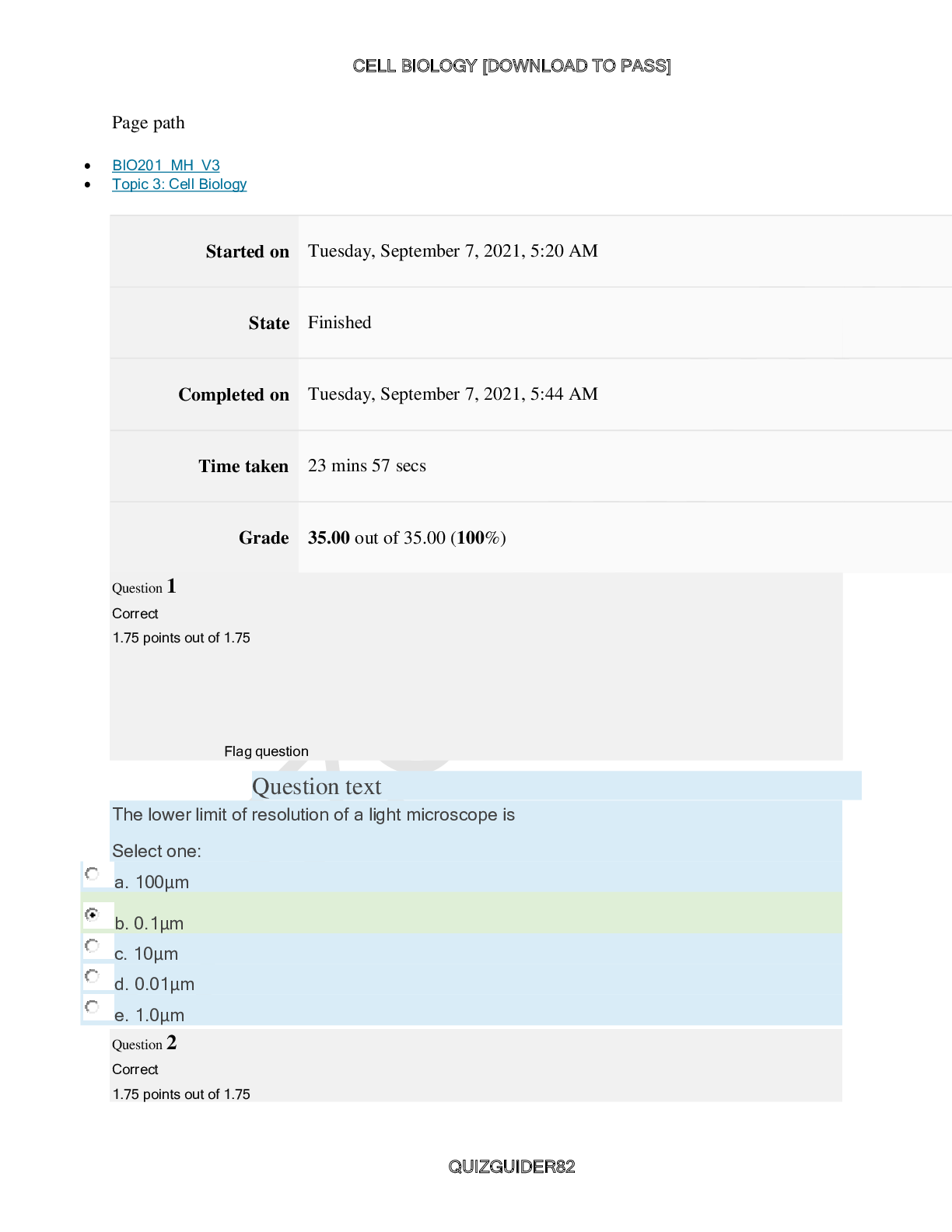
Buy this document to get the full access instantly
Instant Download Access after purchase
Add to cartInstant download
Reviews( 0 )
Document information
Connected school, study & course
About the document
Uploaded On
Dec 03, 2022
Number of pages
15
Written in
Additional information
This document has been written for:
Uploaded
Dec 03, 2022
Downloads
0
Views
84
